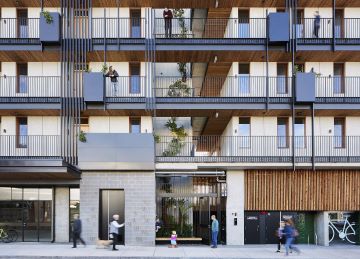Materials
Published:
11 April 2023
Edited:
16 January 2024
Read time: 4 minutes
The careful selection of building materials and products and their use in design has the potential to reduce life-cycle environmental impacts — including resource depletion and consumption, habitat and biodiversity loss, environmental pollution and toxicity — and contribute to the environmental performance of a building. Materials should be selected to minimise construction waste and maximise reuse and recycling. Materials should also be selected to avoid chemical risks to human health and the environment.

 Only eligible Institute members and subscribers can view the rest of this note. Please register or login to view.
Only eligible Institute members and subscribers can view the rest of this note. Please register or login to view.
